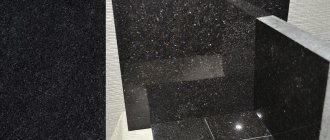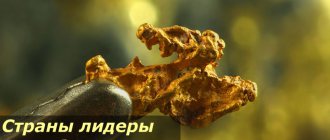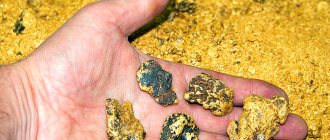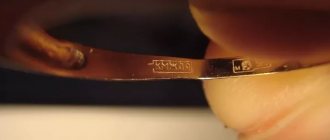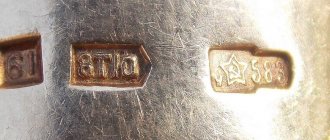Industrial gold mining is predominantly concentrated on extracting the precious metal from ore, but alluvial gold mining is also highly developed in Russia. From a material point of view, mining precious metals in this form does not require large financial expenses. You don’t need to buy expensive equipment and dig up tons of rock, because alluvial gold mining has changed little since ancient times. Therefore, in fact, everyone who has an interest in this matter could search for golden grains of sand. But in the Russian Federation, unauthorized artisanal gold mining is prohibited at the legislative level.
However, those who want to become miners still have a way out of this legislative impasse. They can work for gold mining companies that have an official license to operate. As a rule, such companies are engaged in the development of primary deposits, but are happy to hire people to mine placer gold. How do these two types of gold differ from each other and what are the methods for extracting placer deposits of this precious metal? Let's look at these and other questions.
Main factors for the formation of placer gold
Primary deposits are primary deposits formed as a result of violent magmatic processes. These are cracks or crevices in rock or ore deposits. They are always located in mountainous areas, which were born during the release of magmatic lava to the surface of the earth. In these rocks, mines are created in which mineral extraction takes place industrially.
Alluvial gold is a derivative of primary gold, since these are the same gold particles that, over time, under the influence of natural phenomena, broke off from the main massif and spread far beyond the gold-bearing vein. Deposits are affected by temperature changes, groundwater, the activity of microorganisms and other factors, due to which gold particles can leave their original location. For example, they are often washed out of the rock by heavy rains and strong gusts of wind. With rain streams and melt water, they flow into mountain streams, where prospectors then find them.
Types of gold placer
Experts identify the following types of placer gold:
| Varieties | Characteristics |
| Terraced placers. | Gold placers spread through the water, and therefore you need to look for them near mountain rivers and in them. Terraced golden grains of sand can be found on the banks of reservoirs. They are deposited as a result of river overflow after heavy floods and rains. Gold sand grains weigh more than simple silt, and therefore can be moved by a stormy current. When a river floods, it happens quickly and actively, but the water level decreases gradually. Therefore, golden grains of sand do not float away with the water, but remain on the banks. |
| Channel rivers. | Strong floods occur with varying regularity, and therefore placer gold is also found at the bottom of mountain reservoirs. This type of placers is called channel placers. To find it, prospectors have to manually wash away a huge amount of sediment, which they get from river beds. |
| Alluvial. | Such placers of gold, as a rule, appear on slopes in the remains of gold ore. Under the influence of natural silt, these pieces were broken off from the main layer of ore deposits. They are often found near explored and developed deposits. Under the influence of rainwater, they may be washed away a little, moving them further from their original place, but they will still be relatively nearby. |
But it is interesting that there are cases when alluvial placers are found in places where the hill from which they were washed away a long time ago has ceased to exist. Therefore, it is very important for gold miners to have complete information regarding the geological history of the area under study. This also applies to information about where mountain streams lay, which could change their paths over time.
There is a good chance that a large supply of precious placers has been preserved in the place of the dry bed of the ancient river.
What does gold look like in stone?
It is quite difficult for an inexperienced prospector to distinguish the precious metal in a stone. Gold is rarely found in its pure form, and numerous alloys vary in color and degree of luster. In addition, some types of stone have a characteristic shine and can easily be confused with precious ore.
For example, sphalerite or, as it is also called, zinc blende. This is a dark (black or dark brown) color stone with a metallic sheen. Unlike gold-bearing rock, sphalerite crystals are easily scratched and crumble.
A video will help you understand what gold ore looks like. Also in our video you will learn about the main distinctive qualities of precious ore. And get a visual guide to the types of stones containing Au.
Modern methods of alluvial gold mining
Ordinary gold miners search for and develop deposits the old fashioned way. Since ancient times, this labor-intensive process looked like this. A person scoops up the bottom sediments of a mountain river into a special tray and thoroughly washes them down to the smallest grains under a stream of water. Gold is heavy, and its pieces settle on a special grid, while other, less dense particles are quickly washed out of the tray. This grille has a corrugated vinyl covering, which traps the scattering.
In ancient times, instead of these cunning devices, prospectors used ordinary sheep skins. It was just that the gold flakes got stuck in the wool instead of the ribbed vinyl coating like they do now. Even the ancient Greeks went hunting for gold with sheep's fleece. Actually, this is probably where the legend of the Golden Fleece came from.
The second type of this method requires not only great care, but also additional physical effort. Particles of alluvial gold can lie not only on the surface of the bottom of a mountain river, but also in deeper bottom layers. Then the miners dig out the rock with a shovel and wash it in the same tray. But in this case, they still have to grind large pieces into sand so as not to miss precious grains of sand. It's hard work and the "catch" is not as large as in industrial gold mining, but there are still many hunters every year who want to try their luck.
Prospectors primarily mine placer gold in the summer, since standing in icy water in winter and manually sorting through the silt seems an almost impossible task.
But rare units also work in winter, since there are a number of advantages at this time. In winter, the water level in the rivers drops, and it is easier for a person to see particles of gold on its banks. In the cold season, the tools they take with them are not a tray for washing the sludge, but special tools that could be used to beat off frozen pieces of gold.
Gold mining companies also do not stand aside from the extraction of placer gold. They extract it in the waters of seas and rivers using dredges. These are stationary or floating installations with serious technical equipment on board. This technique collects bottom soil. In this case, the depth of intervention in the soil varies from five to fifty meters.
The dredge has all the necessary equipment, which is used to wash the sand and bottom rock raised on board. Large-scale dredges have a staff of ten people, but small devices can be managed by only one manager.
Dredges are divided into:
- marine;
- continental.
Marines can move through the water themselves, or they can be pulled to their destination by a tug. And continental ones, installed on rivers, are created on the basis of flat-bottomed vessels. But for them to operate effectively, there must be a high water level in the river. When it becomes shallow, work is suspended.
Methods for extracting gold from stones
Once the presence of gold impurities in the ore is determined, the raw materials are sent to refineries. Here the ore is processed in various ways, purifying it from all kinds of impurities.
However, in Russia, for the exploration and further processing of ore, it is necessary to purchase special licenses. Otherwise, gold mining and processing will be prosecuted by law. Only licensed refineries have the right to put a sample on the received bars, which is the only confirmation of the authenticity of the precious metal.
In addition, it is quite difficult to obtain pure metal from stone. People have been working on extracting aurum from stone for centuries. And today refining has reached the peak of its capabilities.
There are three options for ore processing, but they all require special training and professional equipment.
Chemical method
In this case, ore processing involves the supply of aggressive acids. Depending on the composition of the alloys, chemists select the necessary acid, which, acting on the ore, dissolves base metals and other impurities. The noble metal remains intact and falls out in the form of sediment.
Dry method
The most labor-intensive method, requiring compliance with increased personnel safety measures.
In order to obtain noble metal using the dry method, you will need special equipment in which rocks are crushed into dust. Next, the gold-bearing dust is attacked by chlorine under high pressure. As a result, the stone dust turns into a gaseous state and makes it possible to extract gold particles untouched by chlorine.
Electrolysis method
Today, depending on the type of ore obtained and its composition, all three methods of gold extraction are used. However, the electrolysis method is gaining increasing popularity. It consists of passing a current through ore mixed with hydrochloric acid. As a result of the reaction, aurum particles precipitate.
Gold mining has become a hobby
In the world, there is very little development of alluvial gold deposits, since the development of primary deposits gives more profit. Funds are being invested in this area and technology is being developed. For example, in one of the world's largest gold mining countries, Canada, alluvial deposits were developed only until the beginning of the twentieth century. And then several large-scale gold deposits were discovered there, and the role of placers faded into the background.
In developed Western countries, alluvial gold mining is currently experiencing a renaissance, but no longer as a serious activity for earning money, but as a hobby.
In the USA and Australia, gold mining tourism is even developed, where anyone can feel like a gold miner by purchasing a gold mining license for a couple of tens of dollars. Every year, such private employees replenish the world's gold reserves by one ton of mined metal. On the one hand, this is not much, but, on the other hand, if you consider the amount of manual labor put into this, this figure is impressive.
Use of precious metal in various industries
The main industries in which this metal is widely used are:
- jewelry industry;
- creation of modern electrical appliances;
- optics;
- medicine;
- cooking;
- atomic research;
- production of weapons of mass destruction.
Only a tenth of the extracted noble element goes into industry, about 45% ends up in the gold and foreign exchange reserves of states and private individuals. The rest of the metal is used to make jewelry.
"Klondike" in Kolyma
The question of how gold nuggets are formed has been discussed in the literature for more than a century, but there is still no consensus among researchers.
There are several points of view. According to one of them, nuggets are formed in placers, another - they are of endogenous origin (i.e., they are formed at a depth of several hundred meters to several kilometers), the third - they grow in oxidation zones of gold deposits due to the dissolution and redeposition of fine and fine gold.
Where are nuggets found?
RUSSIA, LENSKY DISTRICT (basin of the Bodaibo river, etc.). Many placers in this area were distinguished by an abundance of nuggets. However, unfortunately, not all of them have been documented. The largest nugget was found in 1881. Its weight together with quartz was 25.9 kg, the weight of the metal itself was 16.3 kg. For most placers in this area, the primary sources of nuggets have not been identified. Academician V.A. Obruchev studied this area at the beginning of the last century and suggested that nuggets were formed here directly in placers due to the decomposition of weakly gold-bearing pyrites, widely represented in the host rocks (Obruchev, 1961). However, this point of view was not recognized by subsequent researchers.
RUSSIA, SOUTH URAL. Gold nuggets in this region were found in many placers, but the Miass region was richest in them. It was here that the above-mentioned “Great Triangle” was found in 1842. The weight of the nugget is 36.2 kg, the gold purity is 901 ‰. Dozens of nuggets weighing more than 5 kg have been documented (Smolin, 1970; Sobolevsky, 1970). The primary sources of these and other smaller nuggets are thin (10–20 cm) quartz veins with nested clusters of nuggets weighing from hundreds of grams to several kilograms. It is characteristic that in all places where nuggets accumulate there is an increased content of oxidized sulfides. According to M.N. Albov, nuggets of the Ural deposits were formed in weathering crusts, i.e., transformed rocks in the near-surface part of the earth’s crust under the influence of various factors - water, temperature, etc. Fine gold in the upper horizons of ore bodies when they emerge on the day surface under the influence of surface waters it dissolved, seeped into the lower horizons and was redeposited there in the form of nuggets (Albov, 1960). This point of view, as well as Obruchev’s hypothesis, has not received recognition. AUSTRALIA, VICTORIA. During the development of deposits in this state, more than 1,200 nuggets weighing over 620 g were found. Especially many nuggets, both ore and alluvial, were found at the Ballarat deposit. A characteristic feature of this deposit is the sharp enrichment of quartz veins in nuggets at the places of their intersections with thin (1-5 cm) carbonaceous-pyritized interlayers in the host rocks, which are called “indicators”. “Large nuggets, as a rule, are formed at the intersection of small quartz veins with indicators. Often the quartz vein is a vein and the gold is larger than the vein” (Dunn, 1929, p. 283). At the same time, the indicator layers themselves are not gold-bearing. They are only precipitators of gold from solutions, i.e. they contribute to the massive emergence of crystallization centers
Currently, most researchers are inclined to favor the endogenous formation of nuggets, but the question is not entirely clear: why does the number of nuggets found in placers and ore deposits vary so much? According to N.V. Petrovskaya, more than 90% of nuggets were found in placers, although the amount of gold extracted from ore deposits is several times higher than that obtained from placers (Petrovskaya, 1973). It is this fact that mainly causes controversy among researchers regarding the origin of nuggets.
According to N.V. Petrovskaya, a supporter of the endogenous origin of nuggets, this disproportion can be explained by the fact that nuggets are formed in the so-called “head” (i.e., upper) parts of ore bodies. How does this happen? It is assumed that fine gold is leached from the root areas of deposits, transported by ascending solutions and deposited in the upper parts of ore bodies in the form of nuggets, which gradually increase in size and mass.
In the deposits of northeast Russia, nuggets are found in varying quantities in all gold-bearing regions, but the Yana-Kolyma gold-bearing belt (the upper reaches of the Kolyma, Indigirka and Yana rivers) is especially rich in them. This is one of the largest nugget provinces in the world. The number of nuggets - gold particles larger than 8 mm in size in some placers here is 20-30%; nuggets weighing several kilograms (even up to 20) are not uncommon. According to a rough estimate, the number of mined nuggets weighing from 0.1 to 1 kg is several thousand.
Thus, according to documents from one of the mines in the Verkhne-Indigirsky region (the Pobeda mine), about 300 such nuggets and 10 nuggets from one to five kilograms were discovered here. In the Verkhne-Kolyma region, 239 nuggets weighing from one to five kilograms, and 13 nuggets weighing more than five kilograms were registered (Klepikov, 1992). It should be noted that the available information on the number of nuggets found is far from complete. In the first years of gold mining (since 1937) and during the Great Patriotic War, they were practically not recorded, although it was during this period that the richest areas of some large nugget placers were mined.
Chemically pure gold does not occur in nature. Usually it contains an admixture of certain elements, i.e. it is a natural alloy. The main impurity element in native gold, as a rule, is silver, therefore the fineness of gold practically depends only on the content of this element. In addition to silver, nuggets almost always contain small amounts of copper, iron, mercury, silicon, magnesium and aluminum. Less common are antimony, arsenic, lead and bismuth.
When comparing samples of nuggets found in a number of Yakut ore and placer deposits and ordinary small ore and placer gold, no obvious differences were found. However, the following pattern was revealed: the frequency of occurrence of nuggets weighing more than 50 g is highest in placers in which the gold fineness ranges from 830 to 930 ‰. The same picture is observed for other gold-bearing regions of Russia and foreign countries.
When studying the composition of the nuggets themselves, it was found that the fineness of gold is almost the same for all their parts. That is, impurities, in particular silver, are distributed fairly evenly in nuggets. Using spectral analysis, it was possible to establish that copper and mercury were also evenly distributed throughout the body of the nuggets. Consequently, during the growth of nuggets, no significant changes in physicochemical conditions occurred. This fact can be interpreted as evidence of a single-stage formation of nuggets.
The internal structure of some nuggets was studied using acid etching of polished sections (thin plates glued to glass) made from different areas of the nuggets. At the same time, micro-graining, usual for natural gold, with grain sizes of hundredths and tenths of a millimeter, and occasionally several millimeters, was revealed. The conclusion suggests itself that the nuggets are aggregates of a huge number of micrograins fused together. And, judging by their relationships, the crystallization of these grains occurred simultaneously, which explains such chemical and microstructural homogeneity. Otherwise, this structure would be heterogeneous. Based on this, we can say the following: these nuggets are formed in those areas of ore bodies where there are favorable conditions for the massive emergence of crystallization centers.

